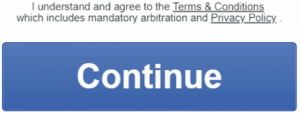The Northern District of Illinois recently denied a motion to compel arbitration in a putative class action, and in doing so found that the defendants failed to show that the plaintiff had agreed to arbitrate the dispute when navigating through one of the defendants’ websites. See Anand v. Heath, et al., No. 19-0016, 2019 WL 2716213 (N.D. Ill. June 28, 2019).
The plaintiff in Anand registered and completed a survey for a gift card on a website owned and operated by a subsidiary of one of the defendants. As part of her registration, she submitted her contact information, including her telephone number. After she received allegedly unsolicited telemarketing calls, the plaintiff filed a putative class action and two of the defendants moved to compel arbitration pursuant to the website’s terms and conditions.
The Website
When the plaintiff navigated through the website at issue, she encountered a “Continue” button directly below the words “I understand and agree to the Terms & Conditions which includes mandatory arbitration and Privacy Policy.” The terms and conditions and the privacy policy were hyperlinked on the screen as shown in the image below:
Although the defendants presented no evidence that the plaintiff clicked on the “Terms and Conditions” hyperlink, they argued that the plaintiff had nevertheless accepted that agreement by virtue of clicking on the “Continue” button.
The Decision
In denying the motion to compel arbitration, the court found that the plaintiff “was not placed on reasonable notice that she was manifesting assent to the terms and conditions by clicking the ‘Continue’ button.” The court began by noting that the agreement at issue here was a variation of a hybrid-wrap agreement—that is, a type of agreement that presents a user with a hyperlink to the terms and conditions and a prompt to manifest acceptance of those terms. It explained that courts generally enforce these types of agreements so long as “the button required to perform the action manifesting assent … is located directly next to a hyperlink to the terms and a notice informing the user that, by clicking the button, the user is agreeing to those terms.” But this case was different, it reasoned, because the website did not include language explaining that clicking on the “Continue” button meant accepting the terms and conditions. It also found that the proximity of the hyperlink to the button in and of itself was not sufficient to show that the plaintiff knew that she was accepting the terms of the conditions.
The Takeaway
The court’s ruling reinforces that businesses should carefully consider how hyperlinks to terms and conditions and the language used to manifest assent to these terms are presented on their websites. Indeed, notwithstanding that a reasonable consumer would most likely understand the implication of clicking “Continue” here, it appears that a few extra words—for example, adding “By clicking Continue” before “I understand and agree to the Terms & Conditions which includes mandatory arbitration and Privacy Policy”—would have changed the outcome under this court’s analysis. Language stating in no uncertain terms that continued navigation through a website is conditioned upon acceptance of linked terms and conditions can be critical for some courts in determining whether a hybrid-wrap agreement is enforceable.





 />i
/>i



